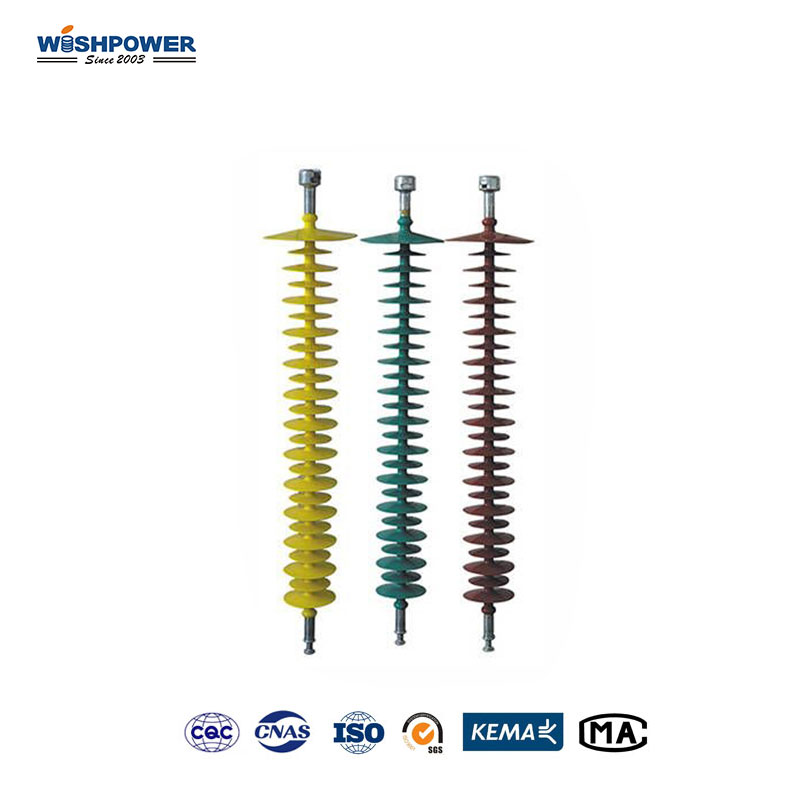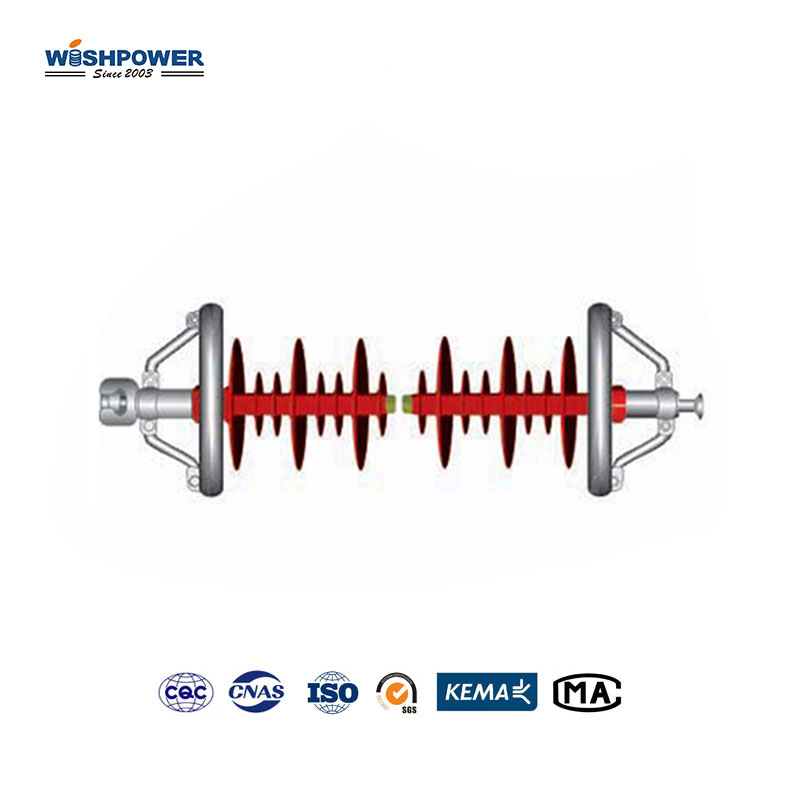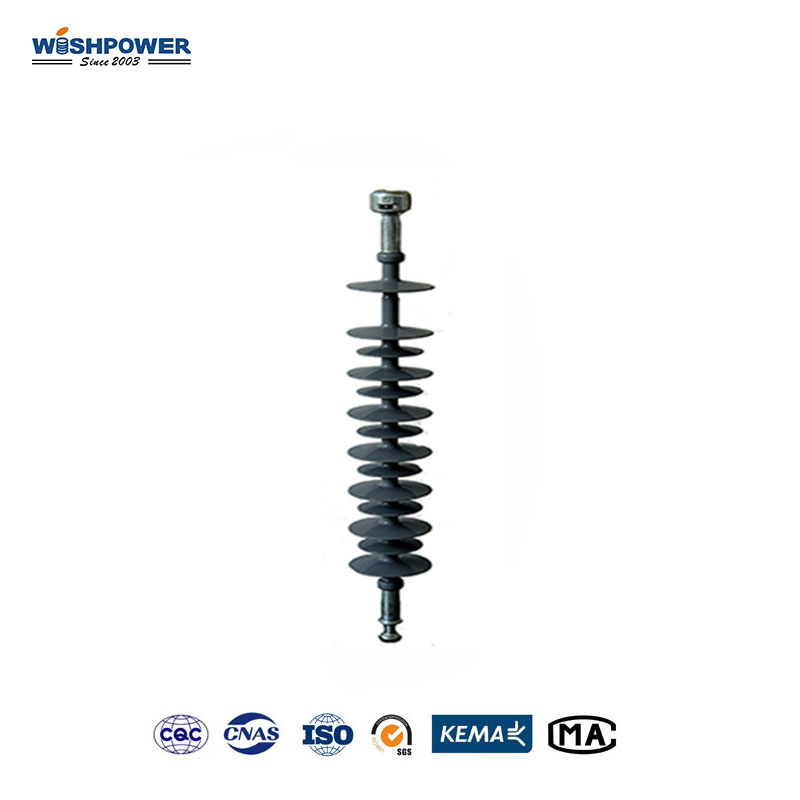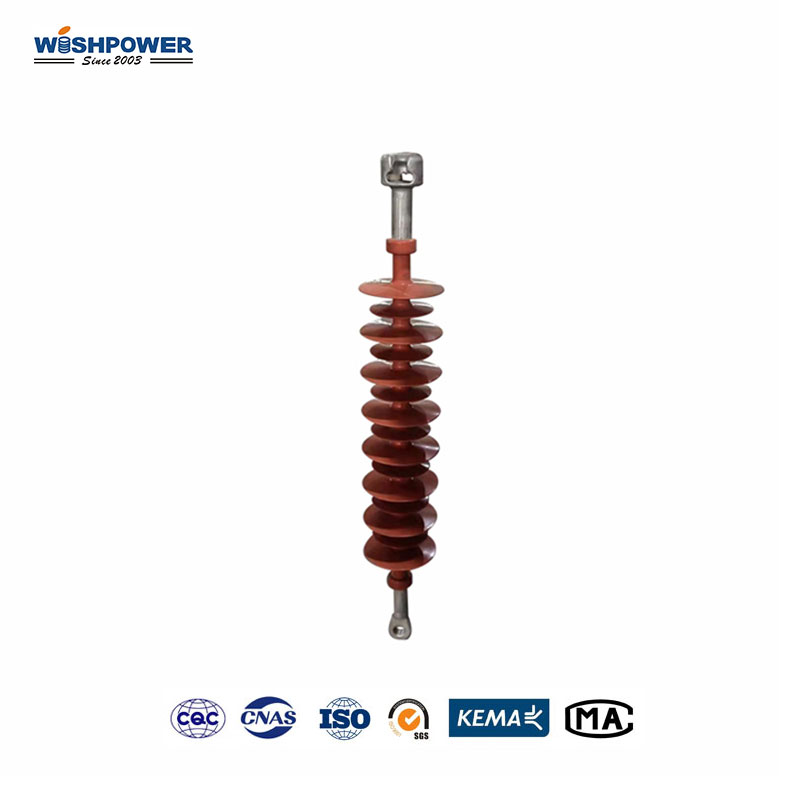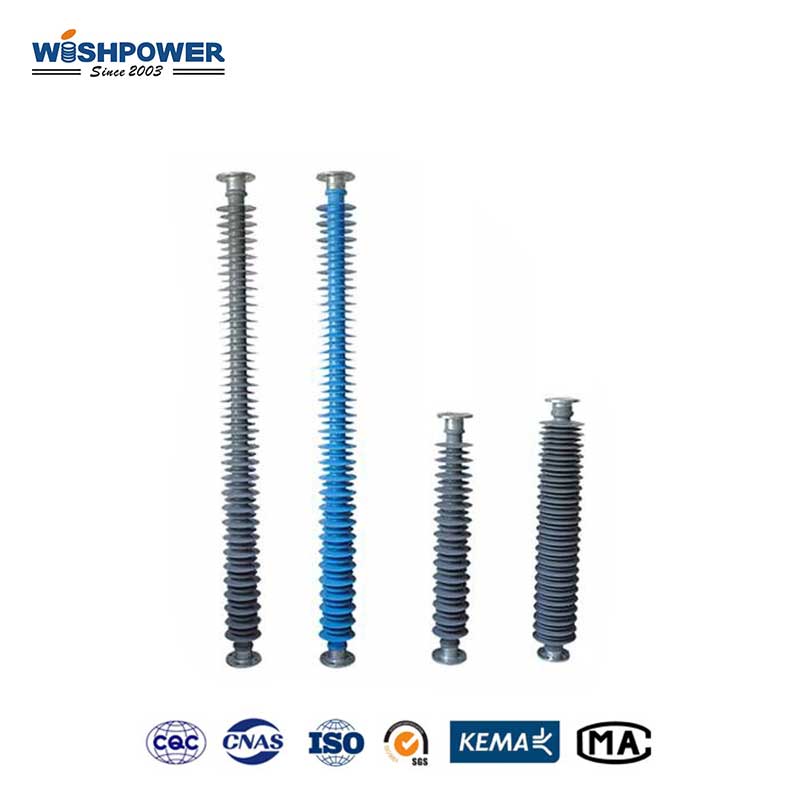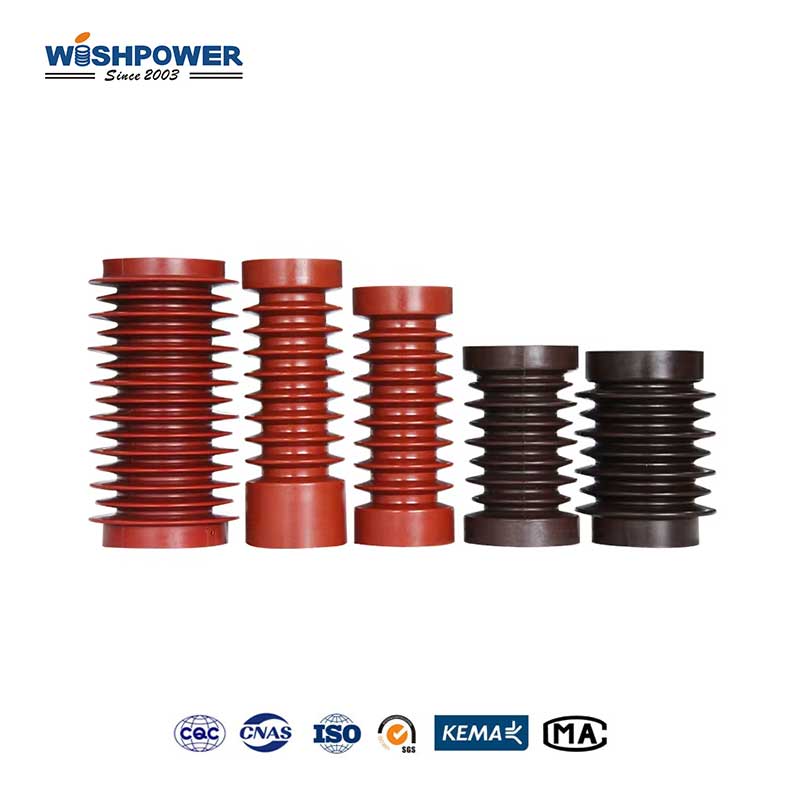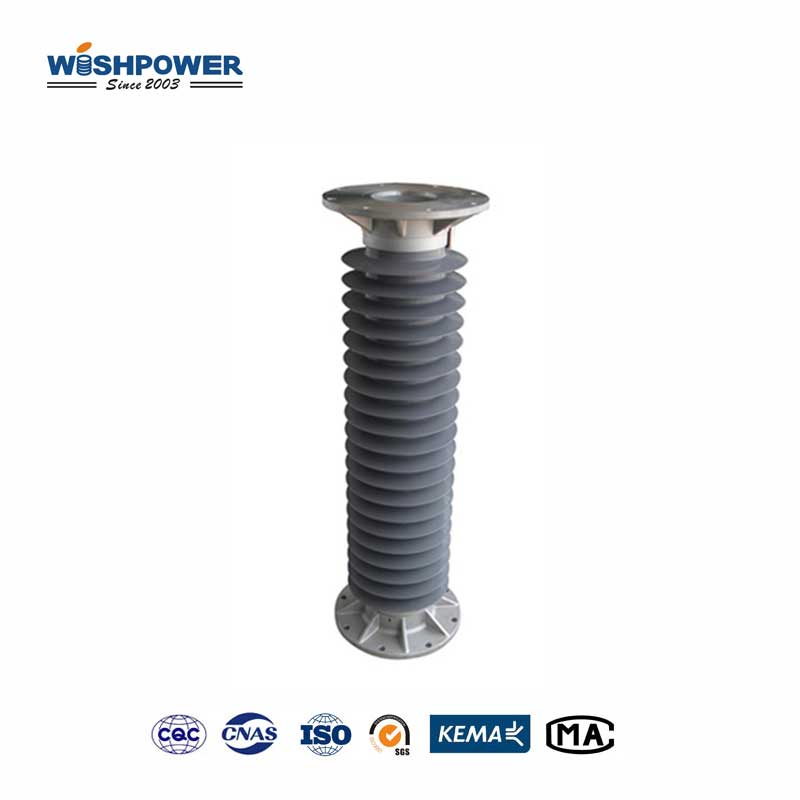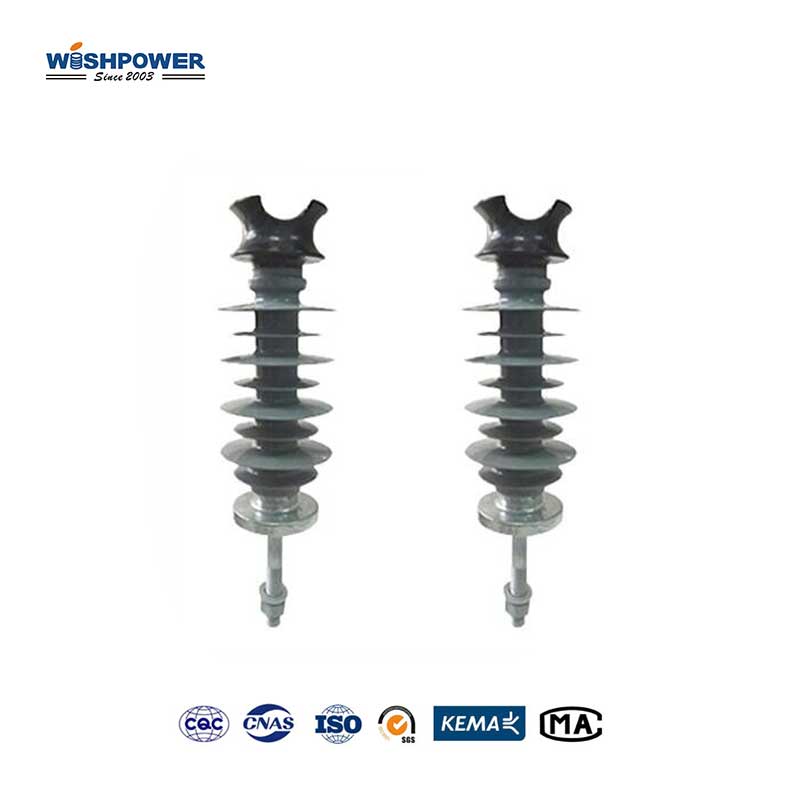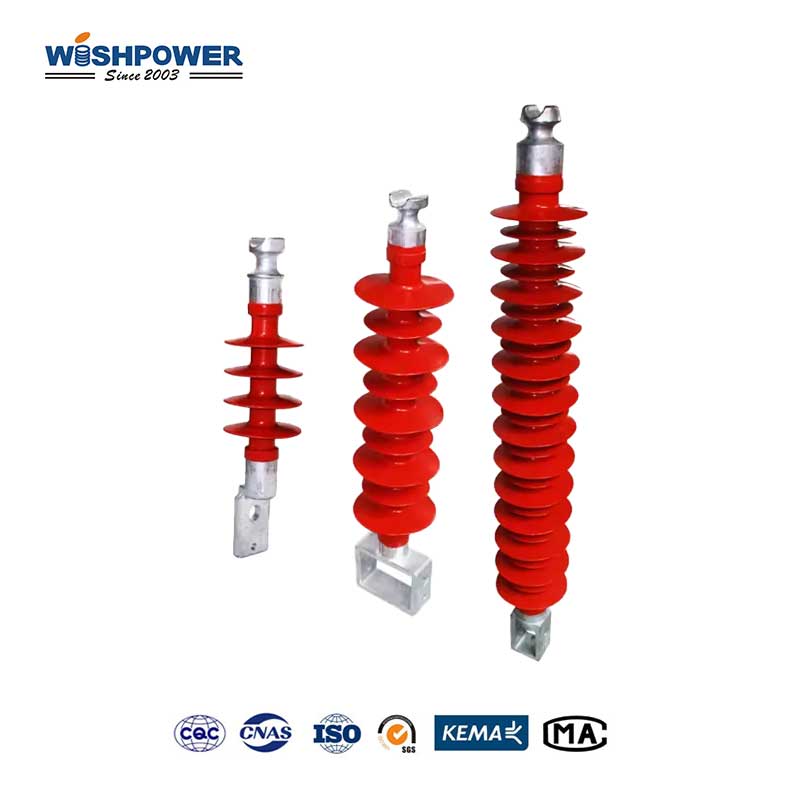Specification
| Type of Insulator |
FXBW-500/(420/400) |
FXBW-500/(550/530) |
| Specified Voltage |
500 kV |
500 kV |
| Specified Mechanical Tensile Load |
420/400 kN |
550/530 kN |
| Connection Structure Mark |
28 |
32 |
| Section Length |
4450±50 mm |
4450±50 mm |
| Min. Arcing Distance |
4000 mm |
4000 mm |
| Big shed Diameter |
190 mm |
218 mm |
| Diameter of Grading Ring |
350/370 400 mm |
350/370 400 mm |
| Diameter of Grading Ring |
370/400 mm |
370/400 mm |
| Min. nominal Creepage Distance |
14000 mm |
14000 mm |
| Lightning Impulse Withstand Voltage(peak value) |
≥2250 kV |
≥2250 kV |
| Operating Impulse withstand Voltage(Peak) |
≥1240 kV |
≥1240 kV |
| Power Frequency WithstandVoltage Min.Wet(RMS) |
≥740 kV |
≥740 kV |
| Reference Weight |
33 kg |
34 kg |
The table above is just one of our product parameters. If you want more information, please get in touch with info@wishpower.net or download the file below.
What is the Long Rod Suspension Insulator?
The long rod suspension insulator is an electrical accessory imposed at high voltage transmission and distribution networks for use in suspending overhead electrical lines. It comprises a slender tubular structure with its rod body often fabricated from porcelain, glass, or polymer material known to offer very good electrical insulation and mechanical strength. The design enables them to reasonably bear mechanical loads arising from the conductors’ weight, forces of winds and ice, and electricity. These insulators are placed vertically or in a slightly inclined orientation, and they are very essential for ensuring that the proper clearance distance between the conductors and the structural supporting means, including the towers for transmitting and transformer substations or the utility poles, is observed. They make sure that there is no path of Least resistance through the support structures and thus facilitate the receipt of electricity in distant places. It boasts high efficiency in unleveled environmental climates such as high pollution and moisture conditions, thus making it suitable for many uses in the power business.
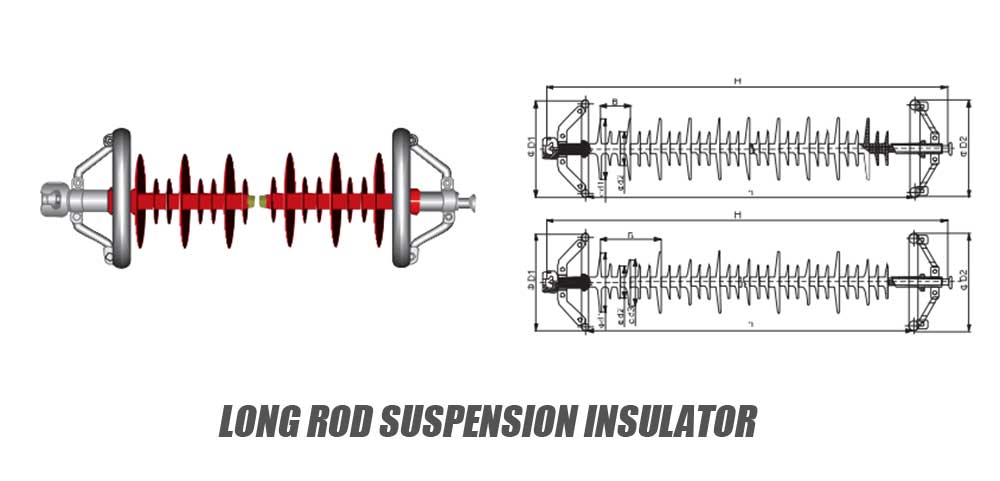
Unique Features
- Improved Mechanical Strength:
Composite suspension insulators have a design that makes them mechanically very strong to withstand high tension from the conductor, wind, or ice thus very reliable in hostile environments.
- Compact Design:
These insulators are slim, elongated structures or rods devoid of disks’ traditional substance, which makes their use result in lighter transmission structures overall.
- Better Pollution Performance:
The above feature of a smooth surface ensures that they do not easily harbor pollutants and thus performance is optimal, especially in areas that have high levels of pollution including the industrial areas or areas near the sea.
- Ease of Maintenance:
The basic structure of it enables efficient inspection and cleaning compared to the assemblies of multiple disc insulators hence less time and money is spent on maintenance.
- Superior Electrical Insulation:
These insulated provide excellent electrical insulation since they have a continuous and unbroken line that prevents flashovers and electrical faults.
- Versatile Installation:
It can be installed in both vertical and slightly inclined orientations, which gives its potential user freedom of choice of various topographical settings of the transmission and distribution systems.
Benefits
- Reduced Flashover Risk:
The lack of gaps in the polymer suspension insulators dramatically reduces the threat of electrical flashovers, thus providing increased safety as well as the dependability of the power system.
- Long Service Life:
Its construction involves the use of strong materials, adding to its ability to last for a long time thus, less replacement is required, and this comes with lesser costs.
- Enhanced System Stability:
High tensile strength and the load-bearing capacity of the mechanical loads also help in strengthening the overall stability of the power transmission system.
- Lower Operational Costs:
Due to the long operational life and low maintenance costs; the operational costs of power utilities are lower.
- Improved Performance in Harsh Environments:
They are very resilient when it comes to environmental degradation and pollution making a perfect choice for rustic environments and guaranteed stability in difficult terrains.
- Adaptability to Various Conditions:
They are also flexible in installation and are constructed within sturdy designs thus can be employed in voltage transmission, transmission lines, and distribution networks thus increasing the flexibility of the power system.
- Simplified Inspections:
In its implication, the streamlined design resolves complicated inspections much to the convenience of the maintenance crews to check and guarantee the reliability of the power lines.
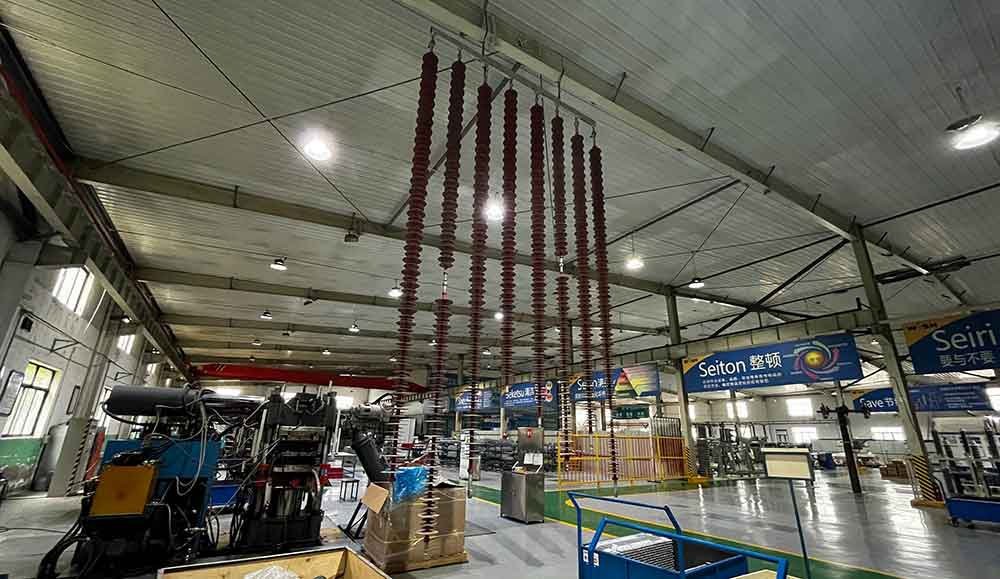
Application
- High Voltage Transmission Lines:
It encompasses applications in the construction and maintenance of electricity transmission and distribution systems including; They are vital components used to encase and protect conductors in high-voltage transmission cables for efficiency and effectiveness in the transmission of electricity over long distances.
- Distribution Networks:
It is used in both urban and rural distribution centers to ensure adequate spacing of the conductors and good insulation to minimize the chances of short-circuiting.
- Railway Electrification:
They are employed in railway electrification systems to hold the conductor bar or overhead wires through which electricity is drawn to the electric train.
- Wind Farms:
It is being used mostly in the wind farm to maintain conductors that transmit electric power generated from the turbines in the wind farm to the grid.
- Solar Power Plants:
They are applied in solar power stations to support and insulate power conductors power from solar panels to other systems.
- Substations:
Suspension insulators used substations to suspend and isolate busbars and other conductors that ensured the substation’s functionality and safety.
About Wishpower

Certificate

Hot Tags: Long Rod Suspension Insulator, Composite Insulator, China, manufacturers, ISO factory, wholesale, KEMA, high quantity, best, price, low to high voltage






